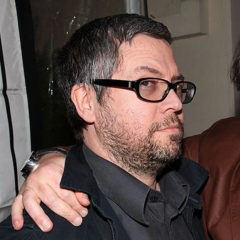Search the Community
Showing results for 'dies irae'.
-
+ you forgot the Dies Irae theme. It's a borderline case, of course, because it wouldn't really be composed by any of the three, but I think the two uses in this series are a nice continuation of the mysteriousness that this theme has in the Star Wars universe.
-
So if I am understand the document correctly, the album features 15 different themes? Williams' Obi-Wan (Williams) 01 Obi-Wan (A,B, Ostinato 1, Ostinato 2, Ostinato 3) (Ross) 06 The Journey Begins (Ostinato 1, A, B) (Ross) 13 First Rescue (A, Ostinato 1) (Ross) 18 Some Things Can't Be Forgotten (Ostinato 1, A, B) (Holt) 20 Hangar Escape (A) (Holt) 23 Dark Side Assault (A) (Ross) 24 I Will Do What I Must (A) (Ross) 27 Overcoming The Past (A, Ostinato 1) (Holt) 29 Who You Become (A) (Ross) 30 Saying Goodbye (A, B) (Ross) 31 End Credits (Ostinato 1, A, B, Ostinato 2, Ostinato 3) Williams' Imperial March (Holt) 22 Empire Arrival (Holt) 26 No Further Use (Ross) 27 Overcoming The Past Williams' Princess Leia (Ross) 30 Saying Goodbye Williams' The Force (Ross) 30 Saying Goodbye Ross's Logo Theme (Ross) 13 First Rescue (Ross) 18 Some Things Can't Be Forgotten Ross's Menacing Vader (Ross) 18 Some Things Can't Be Forgotten (Ross) 24 I Will Do What I Must (Ross) 27 Overcoming The Past Ross's Battle Theme (Ross) 24 I Will Do What I Must (Ross) 27 Overcoming The Past Holt's Reva/Inquisitors (Holt) 3 Inquisitor's Hunt (Holt) 11 Cat and Mouse (Holt) 17 Parallel Lines (Holt) 19 Stormtrooper Patrol (Holt) 22 Empire Assault (Holt) 26 No Further Use (Holt) 28 Tatooine Desert Chase Holt's Alderaan (Holt) 4 Young Leia (Holt) 5 Days of Alderaan (Holt) 7 Bail and Leia Holt's Young Leia (Holt) 4 Young Leia (Holt) 17 Parallel Lines (Holt) 23 Dark Side Assault Holt's Agony (Holt) 08 Nari's Shadow (Holt) 17 Parallel Lines (Holt) 25 Sacrifice Holt's Obi-Wan (Holt) 09 Ready To Go (Holt) 21 Hold Hands Holt's Daiyu (Holt) 10 Daiyu (Holt) 12 Spice Den Holt's Aggressive Vader (Holt) 11 Cat and Mouse (Holt) 16 Sensing Vader (Holt) 17 Parallel Lines (Holt) 26 No Further Use Holt's Stormtroopers (Holt) 19 Stormtrooper Patrol (Holt) 22 Empire Arrival (Holt) 23 Dark Side Assault Plus Dies Irae and whatever "Martial Chords" is...
-
Yes, yes, yes!!! DIES IRAE, IMPERIAL MARCH, LEIA and FORCE! We did it folks! Although the statements somehow lacked some 'performance power', I'm still very happy to hear them. I would have liked Luke's Theme somehow, that would have closed the circle of OT Themes perfectly. The Force Theme statement had a lot in common with the one during Leia and Rey's hug in TROS https://youtu.be/xOGiyALRe3o (0:14). (Oh, it's so nice that both scenes feature Leia!) However, I liked the statement of Leia's Theme the most, which touched me the most emotionally. I think Carrie Fisher would be very pleased to see young Leia played so beautifully.
-
I went through the list for the original Star Wars score and broke it up into all the separate cues instead of the combined versions on the SE set. Other than using the original cue titles, separating the cues, and correcting the timestamps accordingly, the analysis is identical to @Counterparts' excellent original. Hopefully people might find it useful Main Title: 0:07 Luke's Theme A Section 0:26 Luke's Theme B Section 0:48 Luke's Theme A Section 1:25 Luke's Theme A Section 1:38 Rebel Fanfare 1:41 Mars, Bringer of War Reference 1:56 Rebel Rhythm 1:58 Rebel Fanfare The War: 0:00 Rebel Rhythm 0:04 Rebel Fanfare 1:11 Imperial Motif (Fragments) 1:41 Rebel Fanfare 2:20 Ben Kenobi's Theme (The Force Theme) 2:31 Leia's Theme 2:52 Leia's Theme The Escape Hatch: 0:05 Leia's Theme 0:28 Imperial Motif 1:09 Escape Pod 1:16 Imperial Motif 2:40 Death Star Motif Desert Song: 0:00 Stravinsky Reference The Little People: 0:38 Jawa Rhythm 0:46 Jawa Theme A Section 1:16 Jawa Theme A Section 1:49 Jawa Theme B Section 2:19 Jawa Secondary/Sandcrawler Theme 3:15 Jawa Secondary/Sandcrawler Theme 3:50 Imperial Motif More Little People: 0:10 Jawa Rhythm 0:16 Jawa Theme A Section 0:40 Jawa Theme B Section 1:03 Jawa Theme A Section 1:25 Luke's Theme A Section 1:45 Dies Irae (Fate Motif?) R2: The Princess Appears: 0:31 Leia's Theme Lost R2: 0:00 Unknown 0:22 Dies Irae (Fate Motif?) 0:44 Dies Irae (Fate Motif?) 1:00 Unknown 1:20 Threepio Motif? 1:21 Landspeeder Travel Motif? Lost R2 (revised): 0:00 Unknown 0:03 Luke's Theme A Section 0:28 Ben Kenobi's Theme (The Force Theme) 1:00 Rebel Fanfare 1:23-1:41 Dies Irae 1:23 Luke's Theme A Section 1:37 Ben Kenobi's Theme (The Force Theme) The Sand Speeder: 0:00-0:32 Landspeeder Travel Motif 0:11 Luke's Theme A Section The Sandman Attacks: 0:37 Sand People Motif? 1:37 Ben Kenobi's Theme (The Force Theme) Obi-Wan Kenobi: 0:09 Ben Kenobi's Theme (The Force Theme) 0:45 Sand People Motif? 1:00 Threepio Motif? 1:08 Landspeeder Travel Motif? The Force: 0:00 Imperial Motif 0:30 Ben Kenobi's Theme (The Force Theme) The Princess Reappears: 0:05 Leia's Theme A Home Destroyed (b1-14b): 0:21 Ben Kenobi's Theme (The Force Theme) 0:42 Death Star Motif A Home Destroyed (b31-72+15-30): 0:47 Landspeeder Travel Motif? 0:58 Ben Kenobi's Theme (The Force Theme) 1:26 Landspeeder Travel Motif? 1:29 Ben Kenobi's Theme (The Force Theme) 1:42 Dies Irae (Fate Motif?) 1:50 Death Star Motif 1:53 Imperial Rhythm 1:55 Imperial Motif 1:58 Leia's Theme A Section A Hive of Villainy: 0:31 Ben Kenobi's Theme (The Force Theme) 0:45 Landspeeder Travel Motif 1:06 Landspeeder Travel Motif 1:20 Imperial Motif 1:52 Landspeeder Travel Motif 1:53 Ben Kenobi's Theme (The Force Theme) "Cantina Band" 0:00 Main Melody 0:43 Main Melody 2:29 Main Melody "Cantina Band #2" 0:04 Main Melody 2:15 Main Melody The Inner City: 0:30 Luke's Theme A Section 0:42 Imperial Spy Motif? 0:58 Luke's Theme A Section 1:09 Imperial Spy Motif? Blasting Away: 0:00 Imperial Rhythm 0:03 Imperial Motif 0:06 Imperial Spy Motif? 0:20 Ben Kenobi's Theme (The Force Theme) 0:39-1:00 Blasting out of Mos Eisley Setpiece/Motif? 0:42 Ben Kenobi's Theme (The Force Theme) 1:00 Star Destroyer Chase Setpiece/Motif? 1:08 Blasting out of Mos Eisley Setpiece/Motif? 1:20 Star Destroyer Chase Setpiece/Motif? 1:56 Death Star Motif The Destruction of Alderaan: 0:02 Dies Irae (Fate Motif?) 0:20 Dies Irae (Fate Motif?) 0:46 Dies Irae (Fate Motif?) Is It a Bird?: 0:55 Rebel Rhythm 0:57 Rebel Fanfare 1:21 Stormtrooper Rhythm The Hatch Opens: 0:00 Psycho Reference 0:07 Ben Kenobi's Theme (The Force Theme) 0:29 Imperial Motif 1:19 Imperial Motif (Fragments) 1:39 Luke's Theme A section The Mouse Robot: 1:22 Luke's Theme A Section More Rescue: 0:10 Luke's Theme A Section 1:20 Rebel Rhythm 1:22 Rebel Fanfare 1:26 Leia's Theme 1:39 Luke's Theme A Section The Rescue: 0:16 Imperial Motif 0:33 Rebel Fanfare 1:31 Imperial Motif The Water Snake: 0:14 Dianoga/Trash Compactor A Section 0:36 Dianoga/Trash Compactor B Section 0:45 Dianoga/Trash Compactor A Section 1:10 Dianoga/Trash Compactor B Section The Walls Converge: 0:00 Trash Compactor 0:47 Imperial Rhythm 0:51 Imperial Motif 1:32 Trash Compactor 2:04 Trash Compactor Ben Creeps Around: 0:00 Ben Sneaks Around 1:24 Ben Sneaks Around 2:01 Luke's Theme A Section 2:12 Luke's Theme A Section 2:24 Imperial Rhythm The Swashbucklers: 0:00 Stormtrooper Rhythm 0:03 Imperial Motif 0:11 Imperial Motif 0:27 Stormtrooper Rhythm 0:49 Luke's Theme A Section 1:06 Luke's Theme B Section 1:24 Luke's Theme A Section 1:34 Leia's Theme A Section 1:43 Stormtrooper Rhythm 1:57 Luke's Theme A Section 2:11 Stormtrooper Rhythm 2:14 Imperial Motif Ben's Death: 0:00 Ben Kenobi's Theme (The Force Theme) 0:09 Leia's Theme 0:37 Rebel Rhythm 0:39 Rebel Fanfare 1:01 Ben Kenobi's Theme (The Force Theme) A Section 1:17 Ben Kenobi's Theme (The Force Theme) Here They Come: 0:00 Here They Come Motif (Rebel Rhythm?) 0:09 Rebel Fanfare 0:17 Here They Come Motif 0:21 Rebel Fanfare 0:38 Here They Come Motif 1:11 Here They Come Motif 1:25 Death Star Motif Stand By: 0:54 Death Star Motif Approaching the Target: 0:00 Ben Kenobi's Theme (The Force Theme) A Section 0:15 The Rolling Thunder 0:19 Ben Kenobi's Theme (The Force Theme) A Section 0:38 Imperial Motif 0:44 Imperial Rhythm 1:35 The Rolling Thunder 1:45 Rebel Victory Fanfare 2:29 Ben Kenobi's Theme (The Force Theme) A Section 2:50 Ben Kenobi's Theme (The Force Theme) A Section The Last Battle: 0:37 Imperial Motif 1:55 Luke's Theme A Section 2:16 Ben Kenobi's Theme (The Force Theme) A Section 2:30 The Rolling Thunder 2:37 Luke's Theme A Section 3:12 Luke's Theme A Section 3:34 Mars, Bringer of War Reference? 4:12 Rebel Fanfare End Titles (b1-51): 0:00 Throne Room Fanfare 0:17 Ben Kenobi's Theme (The Force Theme) 0:48 Throne Room Fanfare 0:56 Throne Room Theme 1:11 Luke's Theme B Section 1:29 Throne Room Theme End Titles (b52-end): 0:00 End Credits Rhythm 0:02 Luke's Theme A Section 0:11 Rebel Fanfare 0:17 The Rolling Thunder 0:21 Rebel Fanfare 0:32 The Rolling Thunder 0:39 Luke's Theme A Section 0:55 Luke's Theme B Section 1:12 Luke's Theme A Section 1:36-2:17 Leia's Theme 1:38, 1:42, 1:46, 1:50, 1:54, 1:58, 2:02 and 2:05 (Fragments) Rebel Fanfare 2:18 The Rolling Thunder 2:21 Luke's Theme A Section 2:37 Luke's Theme B Section (Development) 2:53 Rebel Fanfare 2:59 The Rolling Thunder 3:02 Rebel Fanfare (Development) 3:13 Rebel Fanfare 3:26 Throne Room (Development) The Princess Theme 0:15 Leia's Theme 1:30 Leia's Theme 2:25 Leia's Theme
-
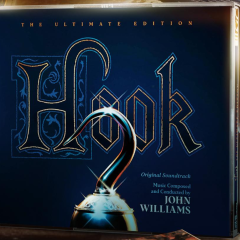
PRESUMED INNOCENT (1990) - 2022 Varese Sarabande Deluxe Edition
Jay replied to Jay's topic in JOHN WILLIAMS
This was a great episode, and surely will be a wonderful companion to the new album. I really hope everyone listens to it and enjoys it, and then comes back and reads my thoughts! I enjoyed the discussion about writing a score that gets more into the phycology of the characters (in a movie where everyone has secrets), as opposed to say, scoring the raw instinct of the shark in Jaws or the bombast of action and adventure. I also enjoyed the talk about how Indiana Jones 3 felt like the end of one era of John's career and Presumed Innocent is like the start of the next, and how much flexing of his scoring muscles he worked out anew throughout the 90s. I also enjoyed Maurizio's observation that John used the French horn in the theme for feelings of regret, instead of the usual way it is used for nobility and heroism. Maurizio's observations about how John scored the sex scene, and how he uses Dies irae in it was fun too -
That driving motif that plays right before the big blast of Ben's theme over Luke in his speeder is one of Luke's. It plays in a slower version when Luke sees the bodies of Owen and Beru. It gets called out for being Dies Irae a lot. It plays at the beginning of Land of the Sand People (not in the film) and in the alternate to Binary Sunset.
-
I gave the Silva second album a listen today (albeit more of a sampling than the entire thing) and the biggest downside is actually the rather harsh recording. It all seems kinda shrill so it's quite hard work even through my Sony headphones which can most things sound decent! A shame as the performances are pretty good, even the City of Prague turn in some perfectly fine performances and the Crouch End Festival Chorus are indeed splendid. As for other suggestions for the original poster: Alexander Nevsky (Prokofiev) - OK so it's technically a film score, but the cantata is perfectly formed tone poem and features choral writing that is alternately thrilling and haunting. If you like James Horner(!) you'll get a kick out of the Battle on Ice which almost invented the epic action cue (even if the jaunty bit in the middle is weirdly out of place). Polovtsian Dances (Borodin) - From his opera Prince Igor, they are often performed as a standalone concert work and are proper old school Russian classical music. The choir isn't the main feature but the whole set are worth a listen. I don't know exactly which dance it is (it's listed as a single track in my library) but there's one which is very famous, not a million miles away from the Verdi Dies Irae. Symphony of Psalms (Stravinsky) - One of my favourite Stravinsky works which is brief but haunting. He wrote a number of other choral works which I'm less familiar with but the Symphony of Psalms really stands out. A Prussian Requiem (John Powell) - I was lucky enough to be at the premiere performance and it really is a superb work. Don't expect it to sound like How to Train Your Dragon or anything, but it's more of a symphonic poem than the more traditional requiems. The album (Hubris) also features The Prize is Still Mine which is a single movement symphonic gospel work which sounds weird on paper but is absolutely amazing - indeed I've listened to it more than the requiem! Fire Water Paper: A Vietnam Oratorio and Juan Darién: A Carnival Mass (Goldenthal) - Basically, if you like Goldenthal, you'll probably like these! The Oratorio appears to be available in lossless but I think the Carnival Mass may be harder to find. Requiem (Faure) - Much smaller in scale and less dramatic than others, but filled with terrific melodies and utterly entrancing. A Symphonic Mass (George Lloyd) - A fairly obscure 20th century British composer whose symphonies totally ignored serialism and are lush and endlessly enjoyable. Similarly, his Symphonic Mass does exactly what it says on the tin, thrilling stuff. His smaller scale Requiem is worth checking out too. Requiem (Berlioz) - Ridiculously over the top (and lengthy) requiem that uses a large orchestra and chorus plus offstage trumpets and so on. Klinghoffer Choruses (John Adams) - Taken from his opera The Death of Klinghoffer they work very well as a standalone choral work. Very much "if you like John Adams, you'll like these". A World Requiem (John Foulds) - Another obscure composer whose work I really like, especially Three Mantras and Dynamic Triptych but his epic World Requiem is superb. Karl Jenkins - someone else mentioned him. Don't tell your classical friends and it's not exactly difficult listening, but his three Adiemus albums are kinda easy listening world choral music (but better written than that might imply) although his Armed Man: Mass for Peace is a finer work of greater depth. I have an album of various concertos by him (call Quirk) which is well worth checking out too. Berliner Requiem (Kurt Weil) - Better known as a song writer and theatre composer, Weil's symphonic music is well worth checking out, the requiem in particular. Chichester Pslams and Mass (Leonard Bernstein) - The Chichester Pslams are perhaps more astringent than some of his more popular works but with all the off kilter jazzy rhythms and good tunes you associate with Bernstein. My school choir attempted to sing this but our choir master concluded that the school orchestra would likely struggle with their part! Harsh but fair (our school had a pretty good choir when I was there despite me being in it). His Mass is somewhat divisive as it mixes more traditional orchestra and chorus with more popular elements, but some fans consider it his finest work. Glagolitic Mass (Janáček) - Another somewhat modernist but very listenable work. I think there's a few bits that James Horner liked the sound of (Sneakers, if I remember rightly). Daphnis et Chloe (Ravel) - The choir is used more as an extra instrument than this being an actual choral work, but absolutely one of my favourite works ever. If you like Jerry in Legend or Secret of NIMH mode, you'll love this. I just wish Ravel had written a load more like this! Belshazzar's Feast (William Walton) - Exciting, dramatic work. A lot of JW's style comes from Walton and not just the ceremonial stuff so his music is well worth a listen in general, especially the first symphony and this. A Book of Proverbs & Four Proverbs (Torke) - Quasi minimalist American composer, he wrote Javelin on the Summon the Heroes album and that's a pretty good indicator of the character of his music. Both works a lively and easy to listen to although the movement I enjoy the most is the non-choral Opening to A Book of Proverbs which is an effortlessly life affirming 4 and a half minutes of orchestral joy. Liverpool Oratorio (Paul McCartney) and Titanic Requiem (one of the Bee Gees) - Fall somewhat into the realms of relatively easy listening but both are worth a listen. A few others that are perhaps not as immediately accessible but worth checking out War Requiem (Britten) - Long but powerful requiem that mixes the more traditional latin words with poetry set to music. Masses (Bruckner) - I admit that I've not listened to these in ages (and now will!) but they are enjoyable, big boned symphonic masses. There are three of them but all worth a listen. There are a number of other composers whose choral works I have enjoyed but have got lost in my amongst my rather too large iTunes library! However, those worth checking out include music by Poulenc, Delius (particularly A Mass of Life), Frank Martin (In Terra Pax and Mass for a cappella Double Choir), Holst (First Choral Symphony and others, although they aren't as much like the Planets as you might hope!), James MacMillan (quite modernistic if you like that kind of thing), Jerry Goldsmith's Christus Apollo is quite hard work but worth a listen, but there's a reason I've listened to Fireworks on that album 45 times and Christus Apollo once... John Rutter (basically Britain's amateur choir composer in residence, tuneful and not super complex, but usually worth a listen), Jón Leifs (he wrote these massive symphonic tone poems that include choir although I've never quite found one I loved as much as the description!), Cherubini (one of those baroque era composers who wrote an awful lot and if you like one of his works, you'll like the rest), Duruflé (his Requiem is lovely), Michael Tippet (A Child of Our Time is long but well worth checking out) I've probably now suggested far too much but, conversely, missed out lots, especially from the "English choral tradition" such as Elgar, Parry etc., but I have to admit that that stuff doesn't do as much for me personally. Happy to expand further if you want to know more!
-
His work on Jedi: Fallen Order with Stephen Barton had a lot of consistent melodies that develop through the story. They even referenced other Williams themes fairly cleverly. When Cal is training as a child just before Order 66, the theme that plays there has elements of "Anakin's Betrayal" and other dies irae variants from the prequels, and I remember hearing the theme from "Palpatine Instructs Anakin" in one of the conversations with Saw Gerrera on Kashyyyk.
-
It seems you didn't understand anything I said - or insist on denying facts, reality, and logic - because you didn't like or expect what you got out of the prequels and sequels... and because you like the ending to Return of the Jedi and think it should be the ending to Saga... or the ending to a story that only needed one trilogy (the OT) to be complete. This is a very short-sighted and selfish approach... and a mistaken one. The points I raised about the prequels and overall narrative - and the yet unanswered questions - are extremely relevant to the reality of all this. But since this is a John Williams message board, perhaps you should try a bit harder when considering the clues within the music. Once again, I'll present some of them: Kylo Ren's Theme starts with five notes in a row from The Emperor's Theme. Rey's Theme starts with three notes in a row from The Force Theme, features its chordal structure, Dies Irae, and minor thirds (like The Emperor's Theme). Dies Irae can be found within the Star Wars Main Theme, Across The Stars, and other themes and cues throughout the scores. These connections are present, regardless if you initially thought they were intentional and meaningful. Considering the musical genius of John Williams, we must come to the conclusion that he composed these themes (and other cues) with intent, completely aware of what he was doing. Anyone who thinks this is a matter of coincidence doesn't understand the fundamentals of music theory composition and/or doesn't appreciate the rare composing skill of Mr. Williams. These very real musical connections appropriately link to the events, character arcs, and overall plots of this grand story, which included the return of Emperor Palpatine... two episodes after Rey and Kylo's themes were introduced. This is a matter of reality. Truly consider the implications: There was a master plan for the story, of which John Williams was told... and he composed the themes and scores accordingly. As far as the main-line narrative, lore, and themes go, I don't think it matters very much to Lucasfilm what the fans/audience wants. The fans will get what is necessary for the story to be told, many substantive clues, and perhaps some distractions to keep them on their toes or - if they failed to pick up on the clues - on the far side of the galaxy. You're right about Disney's infinite resources. George Lucas even stated that the mega company's resources was one of the main reasons he sold Lucasfilm to them instead of another. So why did the story continue as it did? In his published 2020 Star Wars: Fascinating Facts book, Pablo Hidalgo revealed that the story of the sequel trilogy was based on a treatment that George Lucas left the company in 2012. George Lucas trusted his close associate (of 32 years) Kathleen Kennedy to carry on his story... and for good reason. "Good is a point of view..." In 2015, Lucas said of Star Wars: 'It's a story about families... fathers, sons, grandfathers. It shows how the mistakes of one generation are left for the next generation to deal with.' Not true. The events of the previous films led to the events of the later ones. Appropriate and worthy narrative/thematic reasons exist that explain why things transpire as they do in Star Wars... a reason why the Saga had to continue after Episode VI... and why it will continue beyond IX. The audience just hasn't figured it out yet.
-
Is it "just a coincidence" that Kylo's Theme and The Emperor Theme also "share some notes"... five in a row to start Kylo's Theme? Is it also a coincidence that Rey's Theme starts with three notes in a row from the middle of The Force Theme and features its chordal structure? Is it a coincidence that her theme also features minor thirds and Dies Irae? Does everyone here think John Williams composes coincidently? All of these Star Wars musical connections - and many others - are a happy accident that link to the events, character arcs, and overall plots? If so, how amazingly convenient! Re: Episode X It would make sense that Episode X was filmed back-to-back with trIXie... ... to save money with a longer shoot, rather than two separate ones. ... so the entire cast and crew could make the film without the public suspecting. ... so that it could be released as a surprise, whenever they so choose. Rey and Palpatine being related was the "story". The plan for The Emperor's return can be proven from a swath of evidence within the previous films and their novelizations. (We really should have seen it coming.) On this point, Abrams said, "The clues to what we're doing in IX are hidden in plain view." Chris Terrio, his co-writer for IX, said, "JJ loves magic tricks." Colin Trevorrow's script was written and 'leaked' as a distraction. It's was never meant to even been considered for production. (One of the actors even insinuated as much. More on this later.) Regarding the Rey's heritage, Daisy Ridley was either lying in that interview... or she was simply recounting what she was told throughout the shooting of the films, which would be appropriate since her character also was unaware of the truth. And let's not overlook that the last acts of Episode IX and VI were written to mirror each other. Was that a coincidence, as well? In a conversation between Finn and Poe (taking place after the Battle of Exegol and included in The Rise of Skywalker novelization), the two observed that 'the Emperor was thought to have been destroyed at the Battle of Endor but came back stronger than ever'... and the Saga continued with Palpatine being the main baddie of the next trilogy. To those who don't see the writing on the wall - even with all of the evidence I've posted in this thread - I can only conclude that your pride has blinded you. You are in denial and can't fathom you're being tricked by a company that wanted to challenge its audience, starting with the very first Episode: curiously #4, not #1. With a grand plan designed by George Lucas, Lucasfilm's strategy has focused on playing the audience to popularly-held assumptions, assumptions also held by the characters of the story. Such is the nature of parables containing archetype characters, each with a role to play in the overall narrative. In truth, Lucasfilm has already won. You just don't know it yet.
-
I see no evidence that the Screenrant article in question was written by a 'bot'. It said nothing about a "fourth trilogy/George directing rumors". The writer of the article merely noted that Rey's Theme - and other John Williams Star Wars cues - contain Dies Irae... and that this likely means something about Rey's story and/or fate. I tagged onto the 'Dies Irae in Star Wars' list by adding the Star Wars Main Title / Main Theme. Many other quotes can be found throughout the scores. For example, the main theme to Rogue One was based on the section of Learn About The Force that quoted Dies Irae. Even though the article's content was accurate and intriguing, @Docteur Qui seems to have outright dismissed the article based on the content of the website's past articles. I find that strange. I wonder, @Manakin Skywalker, do you classify me in the same category as Mike Zeroh? If so, why?
-
I don't think anyone here was referring to the Main Title/Dies Irae connection (to my knowledge), just the fourth trilogy/George directing rumors. And yes, Screenrant has an atrocious track record, half the time literally reporting on Mike Zeroh bullshit directly.
-
@Docteur Qui, do you think the content of that Screenrant article is untrue? Are you denying that John Williams intended to incorporate Dies Irae throughout the Star Wars scores? I agree, coming up with theories as to why he did this would be part of "the fandom speculation machine", but these types of thinking exercises are what makes Star Wars enjoyable. These are parable-based stories. Consistently interpreting them on a relative surface level - complaining about what you didn't want or expect - is what I would call "an endless cycle of pointlessness".
-
No, but good find, Jay. I'm encouraged that writers for popular websites are beginning to notice - and publicly acknowledge - the subtleties and genius of Star Wars and John Williams' scores... and more importantly, concluding that certain interconnective elements make sense, because they were by design. The more the audience realizes about Star Wars, the more that this reality becomes clear. Though, Ms. St. Denis did not explain her musical observations properly. The first 7 notes of Dies Irae are hidden (almost note-for-note) within the harmony of Rey's introduction cue (The Scavenger ) and in the like-section of Rey's Theme, which starts - and ends - with a motif of rising/falling minor thirds, just like The Emperor's Theme. But why would Dies Irae - denoting impending doom or death - apply to the character of Rey? Rey was ultimately victorious... right? Rey's relevance to the Saga was not that she would be related to Emperor Palpatine... right? Lucasfilm didn't even plan to have Emperor Palpatine return at all... right? Surely, the Star Wars fandom doesn't misunderstand the Saga or its ending. Episode IX was 'The End'... right? Ms. St. Denis was correct when saying that "this isn’t the first time that Williams has included the Dies Irae in his Star Wars compositions." The first time was 14 seconds into the Star Wars Main Title.
-
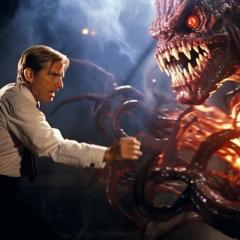
Composer Threads The Official James Horner Thread
karelm replied to Jean-Baptiste Martin's topic in General Discussion
I'm not a Horner apologist. I argued a lot with classmates who listed him as their favorite. I was wrong. He was a FABULOUS composer and I deeply miss his contributions to film scores. I will also add I've heard the exact same sentiment to the performers of his classical scores. Yes, he could be derivative. So were some of the very best composers. Rachmaninoff used the Dies Irae motif frequently. It was a dramatic trope. Like how Mahler used the "fate motif" in his symphony No. 5 which was itself a call back to Beethoven. Horner admitted this was a trope. My bigger issue was that he scored so many films that he ended up repeating himself. Here again, we have classical examples of the same problem. What is your thought of Beethoven's Choral fantasty using the exact same theme of his Ode to Joy Symphony No. 9? -

Composer Threads John Powell kicks ass
Tom Guernsey replied to Morlock's topic in General Discussion
Gave the rest of Road to El Dorado a listen following the exchange and loved it. Such a great score and the songs are pretty good, even if the one song performed by the characters is slightly marred by the fact that neither Kenneth Branagh or Kevin Kline can sing for toffee. I do love that swashbuckling theme and so glad that the eternal mystery in my head has been solved (and I really mean it, it's one of those tunes I randomly hum to myself a lot and it's a huge relief to know where it came from!). A few other observations... I could be reading too much into it, but I wonder if the use of the Dies irae is for the Spanish villain is meant to link his villainy to his religious beliefs somehow. I'm probably reading too much into it, but it's an effective musical sleight of hand. It also means he doesn't get specifically Spanish music, although the use of that musical language here almost feels a bit awkward given that however lighthearted this movie is meant to be in the end, the Spanish are the invaders! Having said that, from a purely musical perspective, it's an interesting musical prequel to Powell's Fernando and you can definitely hear a similar approach to his interpretation of Spanish musical idioms in both. -
At the beginning of this cue, it's one of the most "in your face" version of the Dies Irae I have ever heard haha. In the sens that it's not only the first four notes of the motif that are used, but the whole phrase.
-
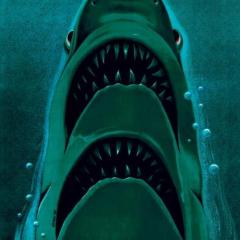
What Is The Last Score You Listened To? (older scores)
crocodile replied to Ollie's topic in General Discussion
The Dies Irae passage in this score is superb. Karol -
The film is a tie. I enjoy Rogue One more but Solo is a more rounded story. Both are pointless, however. Solo is definitely a better score on every level. But I do actually enjoy Giacchino's entry very much. In fact it's one of my favourites of his. Not even remotely close to Williams but a very strong follow-up to his Medal of Honor style. I am hoping to hear the entire work one day. I don't particularly like Jyn's theme but if I treat it as an extension of the Dies Irae "tragedy" stuff from the original SW (Burning Homstead/Binary Sunset alternate) it does work for me. I also treat the somewhat lacking hope theme as as proto-new hope theme (Luke's theme). In my brain it makes sense anyway. 😆 Karol
- 51 replies
-
- John Powell
- Solo
-
(and 2 more)
Tagged with:
-
What Is The Last Score You Listened To? (older scores)
Marian Schedenig replied to Ollie's topic in General Discussion
Some of it, but not all that much. And even the low key stuff has standout bits like The Monastery, easily one of the highlights of the score. And regarding the sound quality, at least the Varese expansion already sounds *much* better than the old release. As for Jurassic Park, I always find that most 4 note mofis sound a bit like the Dies Irae, and all have some familiarity with each other simply through the number of notes, even when they *don't* sound too much like the Dies Irae. JP has two of them - the one that opens the concert version of the main theme on the solo horn, and the raptor motif. The latter has always reminded me a bit of Shostakovich's D-S-C-H in his 10th symphony. -
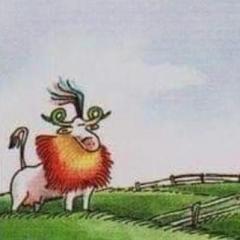
2021 JWFan Composition Competition: Poll
The Illustrious Jerry replied to Jurassic Shark's topic in General Discussion
@bruce marshall: This one sounds most like the stately fanfare I imagined someone would come up with when the competition was announced. The lento introduction is neat and provides contrast for the rest of the piece as it builds up. I like how it develops over such a short time. @GerateWohl: I can't even imagine managing a composition for anything more than a piano much less a whole brass quintet! Good sense of tempo and some really strong counterpoint ideas. @Michael G.: There's a lot packed in this one; it's succinct in the way a studio logo might be. Good choice with the choir/harp samples, and you can never go wrong with a hint of Dies Irae to boot! @MrJosh: There's no option to vote for more than one this year so I'll happily single out this one as my pick. You knocked it out of the park! @Glóin the Dark : There's a great energy to this and it keeps up for the whole minute. I really dig what you got going on here! @Jurassic Shark: My mind went to a silent film piano score at the start (and I mean that in a very good way), but the conclusion really puts this over the top for me. The progression sounds very natural too, which is hard to do in such a short time! @Grace Under Pressure: There's a cool dissonant combination just before the conclusion that adds an extra edge to the idea. Very noble! Really impressive selection from front to back! I always enjoy hearing from you guys, particularly in this sense. Thanks and cheers! -
Danny Elfman's Sleepy Hollow is dark, heavy and gothic, fun and exciting, restrained and understated. Okay, mostly just a couple of those at the same time, but it makes for a dynamic and engaging listen, and a perfect Halloween treat. Today I'm bringing you the Intrada main program synced to the picture (well, the picture synced to it), with only a few very slight adjustments. As usual, I don't have access to the sheets/sketches (in this case the leak is incomplete anyway and Elfman composed in MIDI so who knows if printed versions with notated sync points would even exist), so any non-obvious sync points are little more than guesses based on what feels right. Drive for some reason autoplays these in 360p, but 720p is available in the settings. The score presents multiple themes, but rarely in whole or with any formality, and often counterpointing or leading into one another playfully so they can be hard to pin down. Here's what I collected: Main theme: There's just no other way to name it, no logical association to be found. Among many others, it has 3 main settings: Ichabod/Ichabod's childhood setting: Dreamy, plucky instrumentation, can be playful or more distant. This is where the theme originated while Elfman was writing the score. The Headless Horseman setting: Grand, dark, even over the top. Romantic setting: Pretty much what it says on the tin. Mystery: Wandering up and down but with a feeling of drive and direction, sometimes mysterious, sometimes threatening, pops up at key moments of the investigation. Horseman Rearing: Not necessarily literally, but often used when his strength is demonstrated or about to be. 2-note Horseman: Used more as part of the supporting structure, but gets some moments to shine by itself. Dies Irae: Obligatory. Connected to Ichabod, mostly his past and father. The Main Program 1m1 Introduction - The introductory logos play over the first statement of the main theme on bassoon, then the mystery motif on strings, leading a big orchestral organ-supported crescendo giving place to a prominent boy soloist and men's choir over some of the first credits (of which I assume there were originally more). As Peter Van Garrett signs his secret second Last Will and Testament, setting in motion the main plot, dramatic Main theme readings support dramatically shown motions. As the paper's closed up, the Horseman Rearing motif is also introduced on strings. The pace picks up as we cut to him riding his carriage, but the mood doesn't become any less dark. Suddenly the sound pulls away to a very Elfmany quiet but suggestive setting still playing around with the main theme. The reveal of the headless carriageman makes the orchestra scream out together with Peter and the audience, and we go back to quietly horrory scoring for the classic cornfield chase. The orchestra snarls the main theme one more time as he meets his fate. 1m2 A Place Called... + 1m3 Main Titles + 1m4 Ichabod's Arrival - Moody understatement is a key setting in the score and we get our first real taste of it here. Naturally Christopher Lee pointing at someone has to be dramatically scored with a bell though. Ichabod packing his stuff away getting ready for the journey was shortened a bit. The Main Titles further explore the Mystery and Main themes, also getting into some Dies Irae, and introducing the dramatic 2-note Horseman motif. The third cue has further unsettled Mystery motif explorations and a dramatic 2-note Horseman for the director credit (fittingly over a cut to a dark mansion). 1m6/1m7 The Story... - more quiet or wild Mystery and Main. 2m1 Masbath's Terrible Death + 2m2 Murder + 2m3 Science At Work + 2m4 Young Masbath - A transitionary Main and anticipatory textures lead to another action piece, a combination of the main theme, the 2-note and the Rearing Horseman motifs. The next two cues are mostly understated textural ones, but with some Main and Mystery sprinkled in. A reverent, mourning mood with strings, brass and bells takes over as we cut to Masbath's funeral. Main and Mystery fittingly come back in for the opening of the coffins, looking for clues. 2m5/2m6 Autopsy/Phony Chase + 2m7 Sweet Dreams - More lowkey material, first comedic, then threatening. As the chase ensues, the music kind of reveals it's not the real Horseman by using none of his by now established themes, only Dies Irae for Ichabod's fear. Ichabod's first dream features the main theme in lovely boy solo/choir and string variations (establishing the solo fiddle as being connected to witchyness), a blossoming Dies Irae closing the cue. 3m0 Family History + 3m1 A Gift + 3m2 Spying (partial) + 3m3 Philipse's Death - We get our first romantic readings of the main theme as Ichabod and Katrina get to know each other. As we cut back to the town heads' discussion, Mystery returns to darken the mood (film edit recreated here, explanation later). For the Horseman's return, we get the most gloriously twisted main theme statements so far. 3m4 Dream #2 + 3m4A Forest Transition + 3m5 Into the Woods / The Witch - We're back to the dreamy soundscape, solos, main theme, and the Dies Irae coming more strongly to the fore. Moody strings, bassoon, then a solo female voice occasionally recalling the main theme add weight to the forest journey and the witch's hut, the witchy fiddle fittingly being more distressed and crazy at the end. 3m6-3m7 Mystery Figure + 4m1PT1-2-3 The Tree of Death Part 1-2-3 - Woody, foresty main theme and voices follow the search for the mysterious horseperson, switching to the romantic setting when she's revealed to be Katrina. A small march leads us all to a small main theme and the Mystery motif in an understated rendition. The main theme and Dies Irae lead the way for the Mystery motif as Ichabod digs the Hessian's grave up. As the portal opens up, the Horseman jumps out to incomplete Rearing statements and races off. The Killian family evening idyll with shadowplay and love is scored by soft, twinkly main theme and woodwinds, eventually growing more tense to suggest the coming danger. Mystery heralds the Horseman's steps before he busts in to another incomplete Rearing and gets in a fight with Killian to Mystery, making short work of him. Strings move around in horror, afraid to truly scream out, until the horseman does eventually find the son. Screaming brass warns Brom foolishly challenging him and Ichabod joining in. As the dark entity finishes the job, he walks off to the finally once again complete and clear Rearing and Ichabod faints again to the main theme. 4m2 Katrina's Brew + 4m3/4m4 Bad Dream / Tender Moment + 4m5 Trouble In Town + 5m1 The Will - Witchy textures with a main theme on oboe aid Katrina's potion brewing, then we get our third and last flashback dream, the darkest one, fittingly foreshadowed by Mystery, mostly based on evil organy sounds and the main theme. Ichabod has some time to reflect on these shadows of his past with a dark main theme setting gradually moving into the romantic setting. The final notes grow colder as we see Lady Van Tassel. As Ichabod makes a discovery about family trees, strings play Mystery, then a jagged main theme accompanies him to Notary Hardenbrook's. Young Masbath then finds the secret second will and that rhythm picks up again with some Horseman Rearing suggestions, mirroring the moment it was sealed off, culminating in another Mystery - main theme ending. 5m2/5m3 Evil Eye + 5m3-A Lady Van T's Hand + 5m4 The Church Battle + 5m5/5m6 Love Lost + 6m1/6m2/6m3 The Windmill + 6m4A The Chase + 6m4 The Final Confrontation + 6m5 A New Day + 6m6 End Credits - The final stretch of the movie is completely through-scored, as represented here. More jagged main theme accompanies our heroes in pursuit of the cloaked figure. The romantic setting sounds broken and cold for the confrontational conversation. The understated textures return with some Mystery for Lady Van Tassel and the Horseman, who also gets his 2-note and Rearing themes again, but not as powerfully since he's ineffective on hallowed ground - until he gets Von Tassel too, when they play complete again together with his setting of the main theme. As Katrina faints, the romantic main theme arrives at a scary conclusion as we realise she drew the Evil Eyes. A sad version of the romantic setting accompanies Ichabod's farewells. The rhythm picks up as his carriage starts, but the Mystery theme soon takes over as Ichabod really can't put some ideas to rest and notices further clues. A shocked and strange Mystery scores Lady Van Tassel revealing herself to Katrina and we arrive at the showstopping final action rush - varied combinations and juxtapositions of the Mystery, Horseman Rearing, Horseman 2-note and of course main themes, with changing tempos and callbacks to earlier pieces nicely accentuating the current level of peril or the drivenness of the characters. The finale is especially reliant on the Horseman's and the main themes, also reprising the Mystery motif for when he finally crawls back to the underworld. The epilogue grows from a smaller to a grand, new century-welcoming, evolved statement of the main theme, then the credits riff more on it and the Mystery motif, mirroring the Main Titles to some degree.
-
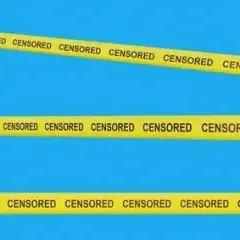
Harry Potter 7CD Collection - MUSIC discussion
Jurassic Shark replied to Jay's topic in JOHN WILLIAMS
The widespread practice of quoting the Dies Irae motif started way before Stravinsky. Listen to Berlioz' Symphonie Phantastique, for example. Holst's music is still under copyright and HanZ got sued for similarities to The Planets in the Gladiator score. -
It's funny to think the whole Dies Irae thing emerged very probably with Stravinsky's Symphony of Psalms although he first started the whole chant/patter thing in Les Noces which was completed roughly a decade before the Symphony. Another influence on Stravinsky could very possibly be the astounding Concerto Spirituale by Arthur Lourie written and performed about 18 months before the Symphony of Psalms was premiered. The Nazi's beloved composer Carl Orff was the first guy to famously rip off this choral chant technique in Carmina Burana which proved to be the only worthwhile thing he ever wrote. Britten also utilised the technique in the War Requiem before Stravinsky himself used it again to great effect in his Requiem Canticles from 1966.
-
I mean, I guess the copyright holders should care, but they clearly never notice as this kind of thing happens all the time in film scores. Compare "To the Plaza, Presto" from Home Alone 2 with "Fighting the Troll" from the first Harry Potter. Or the main titles from Poledouris' Conan the Barbarian and Goldsmith's Total Recall. Or consider James Horner's use of his "danger motif" in basically all of his scores from the 80s to the 2010s. Hans Zimmer does this shit all the time too. He reused a riff he wrote for Drop Zone in Gladiator and then a couple years later he made it the main theme for Pirates of the Caribbean. Also, why are score composers basically allowed to rip off classical works with impunity? Holst's Mars gets quoted in everything from Star Wars to Gladiator to Chicken Run to TV's Chuck. And don't get us started about Dies Irae. It's in everything too.

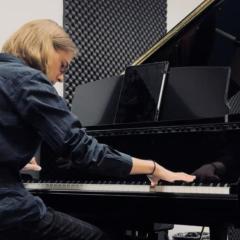

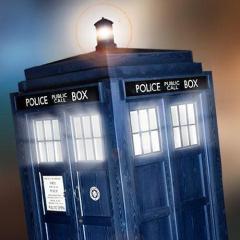

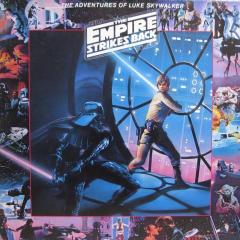

.thumb.jpg.75d0bef92fd5d333326cad21f3788748.jpg)



